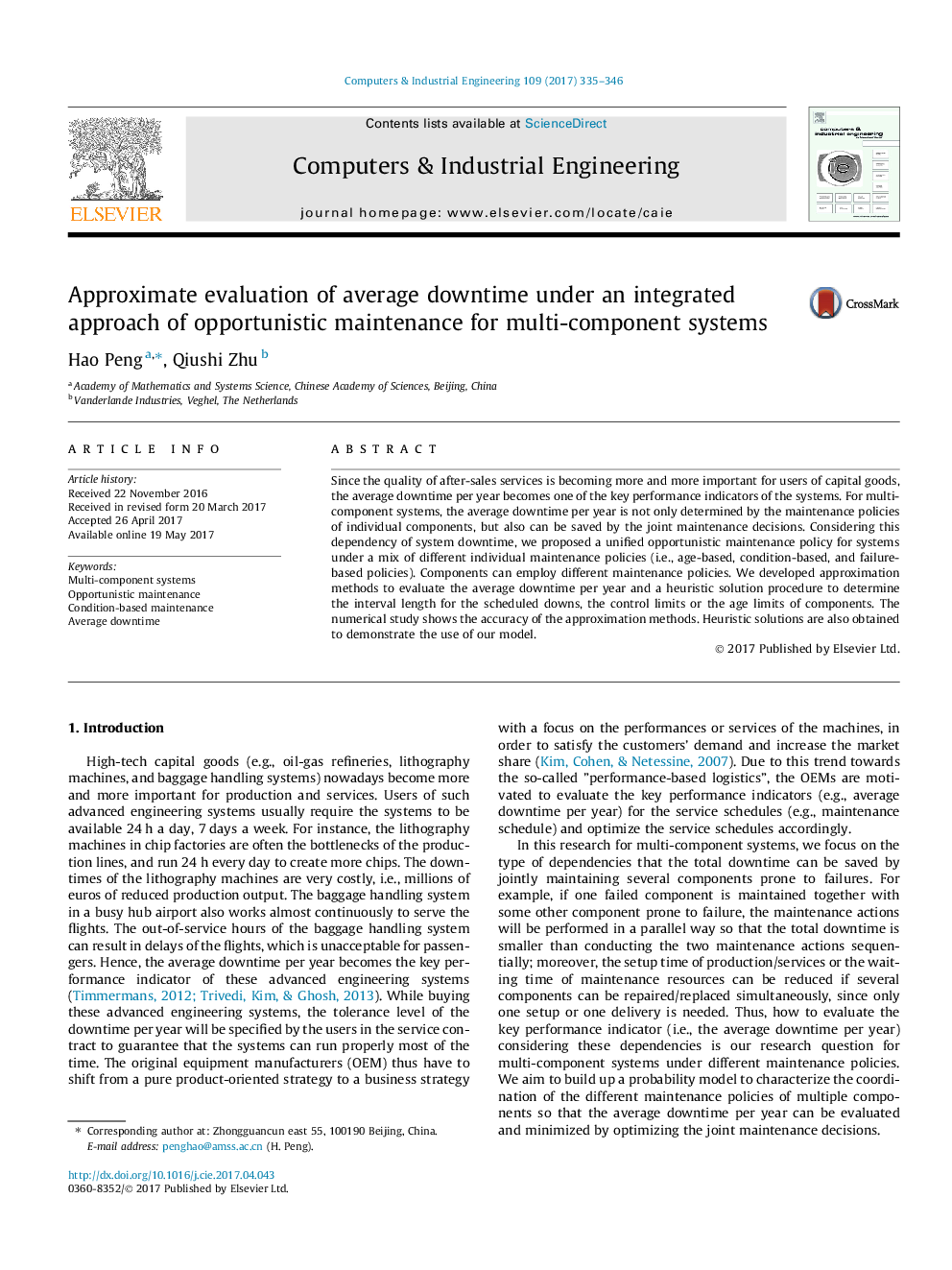| Article ID | Journal | Published Year | Pages | File Type |
|---|---|---|---|---|
| 5127692 | Computers & Industrial Engineering | 2017 | 12 Pages |
â¢For average downtime evaluation, the dependency among components related to the joint maintenance decisions is considered.â¢Components can employ different types of maintenance policies, e.g., age-based, condition-based and failure-based policies.â¢The shifts of renewal points due to the scheduled downs are taken into account in the analysis.
Since the quality of after-sales services is becoming more and more important for users of capital goods, the average downtime per year becomes one of the key performance indicators of the systems. For multi-component systems, the average downtime per year is not only determined by the maintenance policies of individual components, but also can be saved by the joint maintenance decisions. Considering this dependency of system downtime, we proposed a unified opportunistic maintenance policy for systems under a mix of different individual maintenance policies (i.e., age-based, condition-based, and failure-based policies). Components can employ different maintenance policies. We developed approximation methods to evaluate the average downtime per year and a heuristic solution procedure to determine the interval length for the scheduled downs, the control limits or the age limits of components. The numerical study shows the accuracy of the approximation methods. Heuristic solutions are also obtained to demonstrate the use of our model.
